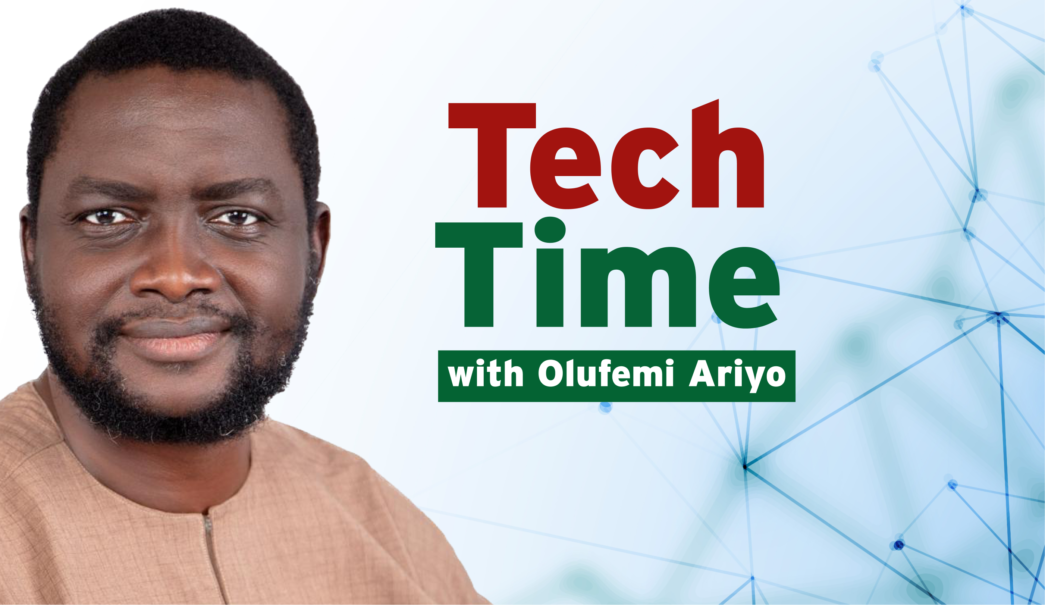The tech industry has since been at the forefront of innovation, giving new realities to how we live, work, and interact with the world. Yet, for all its forward-thinking breakthroughs, it still grapples with a persistent and notable imbalance: the underrepresentation of women in its core workforce. Women continue to make up a disproportionately small percentage of developers, engineers, and product designers—a reality that extends beyond boardrooms and coding bootcamps into the products we use every day.
Moreover, this gender gap is not merely a workplace equity issue, but a design flaw with real-world consequences. When women and other underrepresented voices are absent from the creation and decision-making processes, the results can be products and services that unintentionally exclude or even put at disadvantage large segments of the population. This ranges from fitness trackers that initially failed to account for menstrual health, to voice assistants that reinforced outdated gender stereotypes, there is a growing body of examples that reveal what happens when innovation is not inclusive.
Representation matters, not only because everyone deserves a seat at the table, but because diverse teams build better, smarter, more human-centred technology. Inclusive design starts with inclusive voices, and when those voices are missing, so too are the insights, empathy, and lived experiences that lead to truly impactful innovation.
Section 1: The Problem of Homogeneity in Tech Design
Advertisement
One very big challenge facing the tech industry today is the lack of diversity within the teams designing and building technology. When design and development are dominated by a homogeneous group (often predominantly male, and frequently lacking in diverse cultural and life experiences) the resulting products tend to reflect a narrow viewpoint. This lack of diversity will not only limit creativity or innovation; it fundamentally shapes how technology interacts with and serves its users.
The Impact on Product Design
At its core, tech design is about solving problems and meeting user needs. But when the creators themselves do not represent the full spectrum of users, key needs can be overlooked or misunderstood. Take, for example, voice assistants such as Siri, Alexa, and Google Assistant. These AI-powered assistants were initially designed with default female voices that are often programmed to be polite, accommodating, and helpful—traits culturally stereotyped as feminine. This design choice reflects deep-rooted unconscious biases, perpetuating outdated notions about gender roles. It subtly reinforces the idea that women are expected to serve or assist, rather than lead or take charge.
Advertisement
A telling example is Apple’s Siri, which initially came with a female voice by default. When users asked Siri to respond to sexist or inappropriate questions, the assistant’s replies were often evasive or even humorous without challenging the biases implied by the queries. This lack of a strong, inclusive stance highlighted how the design team’s limited perspective shaped the product’s behavior. It took years of public discussion and pressure before companies started offering gender-neutral voice options, demonstrating a reactive rather than proactive approach to addressing bias.
User Experience (UX) Shortcomings
The problem goes beyond voice assistants and stretches into virtually every corner of product design. When tech teams are homogeneous, the resulting user experience often fails to account for the diverse realities of their users. User interfaces and product features might be unintuitive or inaccessible for people outside the dominant demographic.
Consider healthcare technology—a critical sector where inclusive design can literally save lives. Many early health apps and wearable devices were developed by predominantly male teams who overlooked vital aspects of women’s health. Features such as menstrual cycle tracking, pregnancy monitoring, and menopause-related health data were absent or poorly integrated in the early days of health tech. This omission meant that millions of women were underserved by tools that could have significantly enhanced their health awareness and quality of life.
Advertisement
Even beyond healthcare, the lack of gender diversity can result in products that miss important accessibility considerations, fail to resonate with female consumers, or inadvertently reinforce stereotypes. For example, fitness devices and apps often initially prioritised metrics and goals associated with male users, ignoring or minimising the different ways women approach fitness and wellness.
Wider Implications
The homogeneity of tech teams does not only affect the functionality or inclusivity of products, but can also influence market reach and commercial success. When products do not meet the needs of half the population, companies lose out on a vast potential user base. Moreover, the cultural impact of technology, from social media platforms to AI systems, can perpetuate biases that affect social norms and reinforce inequalities.
In summary, the problem of homogeneity in tech design creates a cycle where products are built for a limited audience, which in turn discourages diversity within the industry itself. Breaking this cycle requires intentionally diversifying teams and perspectives—not just for the sake of representation, but to build better, more equitable technology that serves everyone.
Advertisement
Section 2: The Power of Diverse Teams in Creating More Inclusive Products
When it comes to innovation, diversity is not just a buzzword—it is a fundamental driver of better outcomes. Bringing women and people from varied backgrounds into tech teams enriches the design and development process by introducing a wider array of perspectives, experiences, and problem-solving approaches. This diversity of thought directly translates into products that are more inclusive, accessible, and responsive to the needs of a broader user base.
Advertisement
Broader Perspectives Lead to Better Solutions
Women, in particular, bring unique insights that often go unrepresented in technology built by predominantly male teams. These insights can be the difference between a product that merely functions and one that genuinely improves people’s lives. For example, Fitbit, a leading name in fitness trackers, originally launched devices focusing primarily on general fitness metrics like steps taken and calories burned. However, thanks to female engineers and designers who advocated for more inclusive health features, Fitbit introduced period tracking and pregnancy monitoring. These additions filled a significant gap in health technology, addressing the specific and complex needs of women’s health.
Advertisement
This shift benefitted women and also improved the product’s overall value and usability. By considering a broader range of health metrics and experiences, Fitbit enhanced the wellness journey for all users, showcasing how women’s participation in design leads to richer, more meaningful technology.
Real-World Impact: Innovation Driven by Diversity
Advertisement
Numerous studies have confirmed what many in the industry intuitively understand: diverse teams are more innovative. Research from organizations like McKinsey and the Boston Consulting Group consistently shows that companies with gender-diverse leadership outperform their competitors financially and are more likely to develop breakthrough products. The reasoning is straightforward—when teams include women and people from different backgrounds, they ask different questions, challenge assumptions, and uncover blind spots that homogeneous groups often miss.
Women in tech often advocate for features and user experiences that reflect their own realities and those of underrepresented communities. This can include prioritising privacy controls in social media apps, emphasising safety features in ride-sharing platforms, or designing AI systems that avoid racial and gender biases. These contributions don’t only create better experiences for women; they raise the bar for all users, fostering technology that is more ethical, user-friendly, and equitable.
Cultural Sensitivity and Global Reach
Diversity in tech teams also enhances cultural sensitivity—a vital consideration in today’s global marketplace. Women, especially those from diverse ethnic, geographic, and socioeconomic backgrounds, bring cultural awareness that helps ensure products resonate across different communities. For instance, an app designed to support women’s health or beauty needs might have to navigate complex cultural attitudes toward body image, family roles, or even access to healthcare and technology. Female designers who understand these nuances can tailor features to be more relevant and respectful. This cultural sensitivity is essential when launching products internationally, as it can determine whether a product succeeds or fails in a particular region.
Moreover, culturally aware design can help break down barriers for women in traditionally underrepresented or conservative societies by creating tools that respect their privacy, social norms, and accessibility challenges.
The Ripple Effect: More Inclusive Products for Everyone
The benefits of diverse teams extend beyond gender and culture. When women and diverse individuals are involved in product creation, they often champion accessibility for users with disabilities, considerations for different age groups, and accommodations for various socio-economic backgrounds. These inclusive design choices make products better for everyone, regardless of who they are or where they come from. For example, voice recognition technology initially struggled to accurately understand women’s voices, accents, or speech patterns. As teams diversified, engineers improved algorithms to accommodate a wider range of voices, creating a smoother, more reliable user experience for millions.
In summary, diversity in tech teams is not just a moral imperative; it is a business and innovation necessity. Women bring essential perspectives that challenge the status quo, inspire creative problem-solving, and ultimately lead to the development of products that serve a wider, more diverse audience. By embracing inclusive hiring and leadership practices, tech companies can create tools and technologies that reflect the rich tapestry of human experience—making technology truly accessible and beneficial for all.
Section 3: How Women Are Shaping Products in the Tech World
Women are no longer just users of technology but key innovators, leaders, and creators shaping the future of tech products across industries. Their growing influence is helping to build a more inclusive digital landscape where products better reflect the needs and realities of diverse users. From voice assistants to healthcare tech, and from social media platforms to digital communities, women are driving meaningful change.
Voice Assistants and AI: Moving Beyond Gender Stereotypes
Voice assistants like Siri, Alexa, and Google Assistant have become ubiquitous in our daily lives, helping with everything from setting reminders to controlling smart homes. For years, these assistants featured default female voices that, while familiar and approachable, reinforced long-standing gender stereotypes of women as helpful, subservient, and accommodating. Recognising the implications of these biases, companies are now actively working to diversify how these AI personalities are presented. Apple, for example, has expanded Siri’s voice options beyond the traditional female default, allowing users to select male voices and a variety of accents. This move not only counters the stereotype that “female” means assistant but also allows users to choose a voice that resonates more personally with them.
Similarly, Amazon has introduced more gender-neutral voice options for Alexa, aiming to reduce gender bias and create a more inclusive user experience. These efforts are driven in part by women in leadership and development roles within these companies who push for technology that does not inadvertently reinforce outdated societal norms. Their work is helping to make AI assistants more relatable, equitable, and accessible for a broad spectrum of users.
Tech Products Focused on Women’s Health: Designing from Experience
One very impactful way women are shaping tech is through innovations focused on women’s health—an area historically underserved by mainstream technology. Women-led startups and teams understand the complexities and nuances of female health and wellness, and they are creating products that address these needs head-on.
Take Clue, a menstrual cycle tracking app developed by women to empower others with knowledge about their reproductive health. Unlike generic health apps, Clue is grounded in scientific research and user feedback that reflects the real experiences of women, helping users better understand patterns in their cycles, fertility, and symptoms.
Another example is THINX’s Luna, a “smart tampon” developed by a female-led team to provide data on menstrual health that was previously difficult to access or track. By integrating technology with everyday products, these innovators are bringing greater awareness and control to women’s health management, improving quality of life in tangible ways.
These products not only serve women better but also push the tech industry to consider health data privacy, accuracy, and sensitivity—setting new standards that benefit all users.
Social Media and Digital Communities: Leading Inclusivity and Safety
Women’s leadership has also been instrumental in shaping more inclusive and supportive digital spaces on major social media platforms. As these platforms grapple with challenges around body image, online harassment, and digital wellbeing, women in executive and product roles have championed initiatives that foster safer, more empowering environments. For instance, Instagram introduced a range of features inspired by feedback from women and marginalised groups. These include body positivity filters that celebrate diverse skin tones and body types, and enhanced comment moderation tools that allow users to hide harmful or abusive comments. These efforts address critical issues of mental health and safety, recognizing the disproportionate impact of online harassment on women and minority communities.
Similarly, TikTok has rolled out policies and features aimed at combating harassment and promoting positive content, driven by teams including women who understand the unique challenges faced by young women and creators on the platform.
The impact of women’s voices in these spaces extends beyond feature updates—it shifts corporate culture towards empathy, accountability, and inclusivity, setting a new standard for how digital communities can support diverse users.
In summary, across voice assistants, healthcare technology, and social media platforms, women are reshaping the tech world by bringing their lived experiences, expertise, and leadership to the table. Their contributions are creating products that not only address long-neglected needs but also redefine user experience to be more inclusive, respectful, and empowering for all. As women continue to break barriers and innovate, the future of technology looks more equitable and human-centred than ever before.
Section 4: Challenges Still Facing Women in Tech Product Development
While the growing presence of women in tech is helping to shape more inclusive, user-focused products, the journey is far from complete. Despite notable strides in representation, women in the tech industry continue to face a range of challenges that can limit their ability to influence product development meaningfully. These challenges—often systemic and cultural—don’t just affect women individually; they shape entire products, user experiences, and even markets by suppressing vital perspectives.
Unconscious Bias: The Invisible Barrier
One of the most enduring obstacles is unconscious bias, a form of subtle prejudice that persists even in workplaces that outwardly support diversity. In tech, this often manifests during brainstorming, design, and decision-making processes where women’s contributions may be overlooked, minimized, or unintentionally filtered through biased assumptions.
Even when women are at the table, their input can be sidelined or challenged more frequently than their male counterparts’, especially in product development meetings where technical authority is assumed to rest with men. This leads to a design culture where male-centric perspectives dominate, even when women are present.
A telling example lies in the early development of fitness and health tracking apps. These platforms were often built around male bodies and fitness goals, neglecting key features essential to women’s health. Menstrual cycle tracking, pregnancy symptoms, menopause, and conditions like endometriosis were either absent or poorly integrated. Not because of intentional exclusion, but because the mostly male developers simply didn’t think to include them.
This form of oversight isn’t harmless—it sends a message about whose bodies and needs are seen as “standard,” and whose are an afterthought. Until these biases are actively acknowledged and corrected, such blind spots will continue to shape the design of digital products in subtle but harmful ways.
Impostor Syndrome: Silencing the Inner Expert
Beyond external challenges, many women in tech also battle impostor syndrome—the internalised belief that they’re not as competent or qualified as others perceive them to be. This psychological barrier can be particularly damaging in product development, where confidence in one’s perspective is essential for pushing forward new ideas, challenging assumptions, and making design decisions.
In male-dominated environments, women may hesitate to speak up or assert their views, fearing they’ll be seen as less knowledgeable or overly assertive. The lack of visible role models in leadership or technical roles can further reinforce this insecurity, making women feel like outliers in a space where they actually bring crucial insights.
Impostor syndrome doesn’t just affect morale—it impacts outcomes. When women doubt their authority or hesitate to push back on problematic design choices, their absence in shaping the product becomes not just a personal loss, but a strategic one for the company. Addressing impostor syndrome requires both personal resilience and structural support—through mentorship, inclusive leadership, and organisational cultures that validate and amplify diverse voices.
Structural Barriers: The “Second Shift” and Lack of Support
Beyond the workplace, structural and societal expectations continue to weigh heavily on women in tech. Many women juggle demanding tech careers with caregiving responsibilities, often with limited institutional support. The lack of flexible work policies, family-friendly benefits, or accessible childcare options disproportionately affects women, contributing to higher burnout rates and attrition.
This is particularly relevant in startups and fast-paced tech environments, where long hours and a “hustle culture” are often glorified. Such expectations can be incompatible with caregiving responsibilities, forcing many talented women to either opt out of leadership roles or leave the industry altogether—again, reducing the diversity of voices shaping tech products.
Isolation and Underrepresentation in Leadership
Despite gains at entry-level and mid-career positions, women remain vastly underrepresented in technical leadership, product ownership, and venture-backed startups. This lack of representation in decision-making roles can limit their influence over high-impact product decisions and strategic directions. In teams where women are the minority, they may also experience isolation or feel pressure to represent all women, rather than being able to simply contribute as individuals. This “only woman in the room” experience can be mentally exhausting and stifle open collaboration. It can also lead to tokenism—where women are invited to the table for optics, but not truly empowered to make change.
In summary, the challenges women face in tech are multi-layered—ranging from the invisible hand of unconscious bias to the internal struggle of impostor syndrome, and the structural realities of unequal support. These obstacles don’t just affect careers—they directly influence the technologies we build and the inclusivity of the digital world. If the goal is to design tech that truly serves everyone, then dismantling these barriers is not a side issue—it is mission-critical. Creating an environment where women in tech are empowered, heard, and valued isn’t just about equity. It’s about excellence in product development, innovation, and human-centred design.
Section 5: What Companies Can Do to Encourage Diversity in Product Development
As the tech industry continues to recognise the undeniable benefits of diversity, many companies are taking concrete steps to foster environments where women and other underrepresented groups can thrive—especially in product development roles. Building diverse teams isn’t just about checking boxes; it’s about cultivating innovation, expanding market reach, and ultimately creating better products that serve everyone. Here’s how companies can make meaningful progress:
Fostering Diverse Teams: Intentional Recruitment and Hiring
The foundation of any inclusive product development starts with recruiting a diverse workforce. This means going beyond passive hiring to actively seeking out and attracting women to roles traditionally dominated by men—whether they are software engineers, product managers, UX/UI designers, data scientists, or AI specialists.
Leading tech giants have set powerful examples. For instance, Google’s Women Techmakers initiative is dedicated to providing visibility, community, and resources for women in tech globally. It creates a supportive ecosystem through events, mentorship programs, and scholarships, helping women overcome barriers to entry and advance their careers.
Similarly, Microsoft’s Women at Microsoft (WAM) program emphasises inclusive hiring practices and professional development, focusing on building a pipeline of female talent while fostering a workplace culture where women can succeed and lead.
By investing in such initiatives, companies don’t just increase the number of women on their teams—they send a strong signal about the value of diversity and inclusion as core business priorities.
Mentorship and Sponsorship: Empowering Women to Lead
Recruitment is just the first step. To truly change product development, companies need to nurture women’s growth through mentorship and sponsorship.
- Mentorship provides guidance, support, and advice, helping women navigate the technical and social challenges of the industry. A strong mentor can help a junior developer or designer build confidence, develop skills, and find their voice in meetings and decision-making processes.
- Sponsorship goes a step further—sponsors actively advocate for women, pushing for their promotion into leadership roles and greater visibility in high-impact projects. Sponsors open doors, recommend women for critical assignments, and ensure their achievements are recognised.
Companies with formal mentorship and sponsorship programs often see higher retention rates of women and more women rising into product leadership roles, where they can influence the direction and inclusivity of technology development.
Creating a Safe and Inclusive Workplace Culture
Hiring women and placing them in leadership positions isn’t enough if the workplace culture isn’t supportive. Women need environments where they feel psychologically safe—where their ideas are respected, their voices heard, and their contributions valued without fear of dismissal, harassment, or bias.
Creating such a culture involves:
- Zero tolerance for harassment and discrimination, backed by clear policies and swift action when issues arise.
- Inclusive meeting practices, such as equitable speaking opportunities and actively inviting diverse viewpoints.
- Flexible work arrangements that accommodate different life circumstances, especially important given the disproportionate caregiving responsibilities many women carry.
- Recognition and celebration of diverse contributions, helping women feel valued and motivating them to lead bold initiatives.
When women feel safe and empowered, they are more likely to share innovative ideas and take risks that lead to breakthrough products. Leaders in diversity and inclusion emphasise that culture is the soil from which diverse innovation grows.
Accountability and Metrics: Tracking Progress
Finally, companies need to establish clear goals and metrics around diversity and inclusion. This means regularly measuring representation across all levels of product development teams, tracking promotion rates, pay equity, and employee satisfaction.
Publicly sharing diversity reports—as companies like Salesforce and Intel do—creates accountability and encourages continuous improvement. It also signals to employees and customers alike that diversity is a genuine priority, not just a PR move.
In summary, diversity in product development does not happen by chance, but requires intentional actions across recruitment, mentorship, culture-building, and accountability. When companies invest in these areas, they don’t just create better workplaces—they build better products that resonate with a wider audience and lead the way in innovation. Tech companies that prioritise and support women in product roles are setting the stage for a future where technology reflects the richness and diversity of the world it serves—leading to more equitable, inclusive, and groundbreaking innovations.
Conclusion: The Future of Tech and the Need for Representation
As we stand at the intersection of rapid technological advancement and growing global interconnectivity, one truth becomes increasingly clear: technology is not neutral. It reflects the values, experiences, and biases—conscious or not—of the people who create it. That’s why representation in tech, particularly in product development, is not just a matter of fairness or inclusion. It’s a matter of quality, relevance, and innovation.
Diverse teams—especially those that include women from varied backgrounds—don’t just fill quotas; they fill critical gaps in thinking. They ask different questions, challenge assumptions, and see problems and possibilities that others may miss. They help build products that are safer, smarter, and more inclusive—not just for women, but for everyone. From healthcare apps and voice assistants to AI systems and social platforms, the presence of women in tech leads to better outcomes for users, companies, and society as a whole.
Yet, despite all the progress made, the journey is far from over. Women still face barriers—from unconscious bias and impostor syndrome to underrepresentation in leadership. Breaking down these walls requires ongoing effort from both individuals and institutions. It requires not only hiring diverse talent, but listening to them, uplifting them, and giving them the power to shape what gets built.
Be the Change Behind the Code
To the readers (especially women in or aspiring to enter the tech industry) your voice matters. Whether you are a developer, designer, data scientist, entrepreneur, or student, your perspective has the power to shape technology that is more equitable, intuitive, and human-centred. Keep pushing boundaries. Keep speaking up in rooms where your voice may still be a minority. Keep asking, “Who is this product really serving?” And to companies and tech leaders—diversity is not a nice-to-have. It’s a strategic imperative. The future of technology will belong to those who design for the full spectrum of humanity. That future starts with who’s on your team today.
Let’s build a tech world that does not just work, but works for everyone.
Thank you for engaging with this thoughts trail. To continue the conversation, explore collaborations, or access additional resources, feel free to connect through Medium: https://medium.com/@roariyo and LinkedIn: https://www.linkedin.com/in/olufemiariyo/ or send an email to [email protected]












